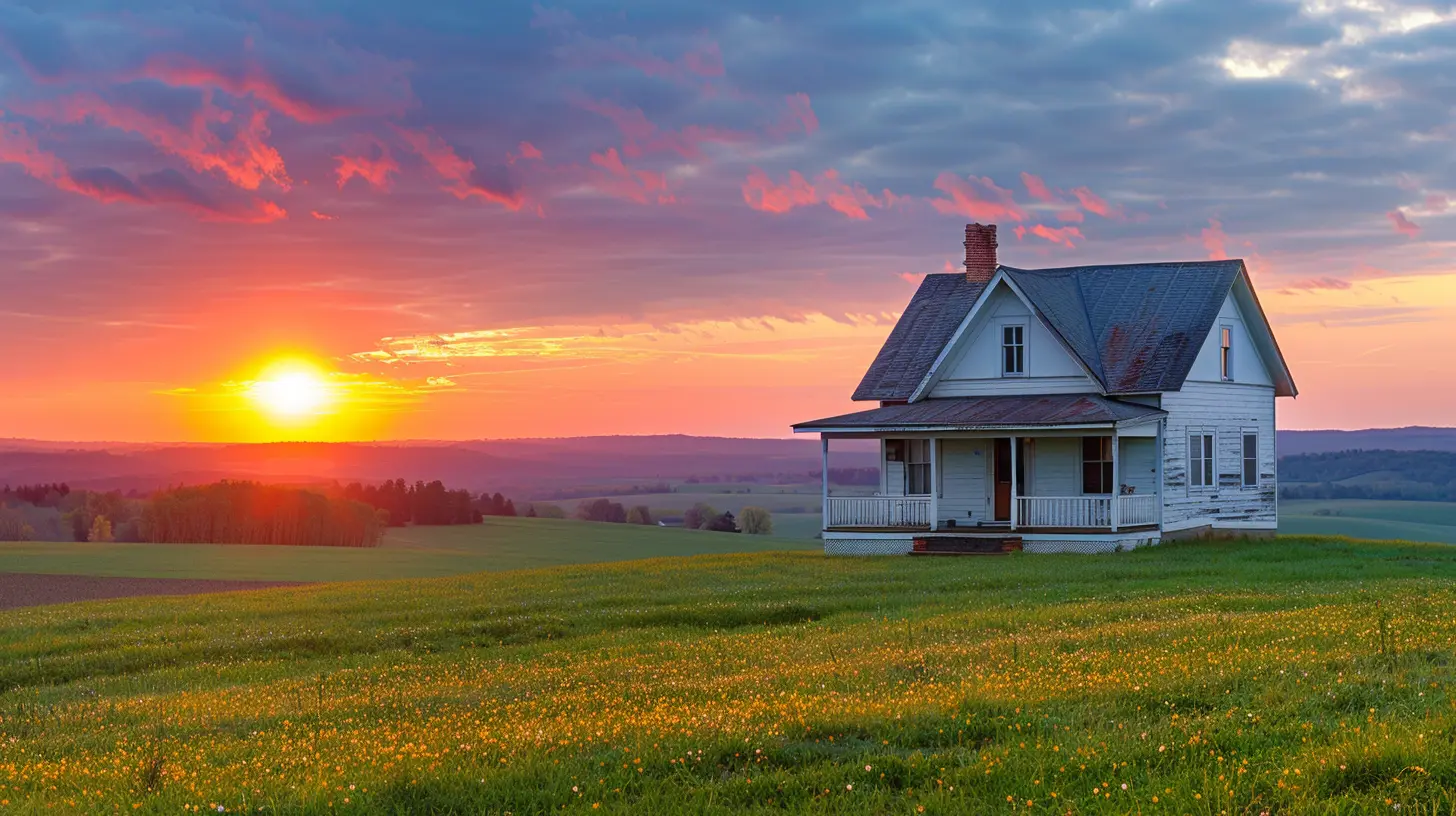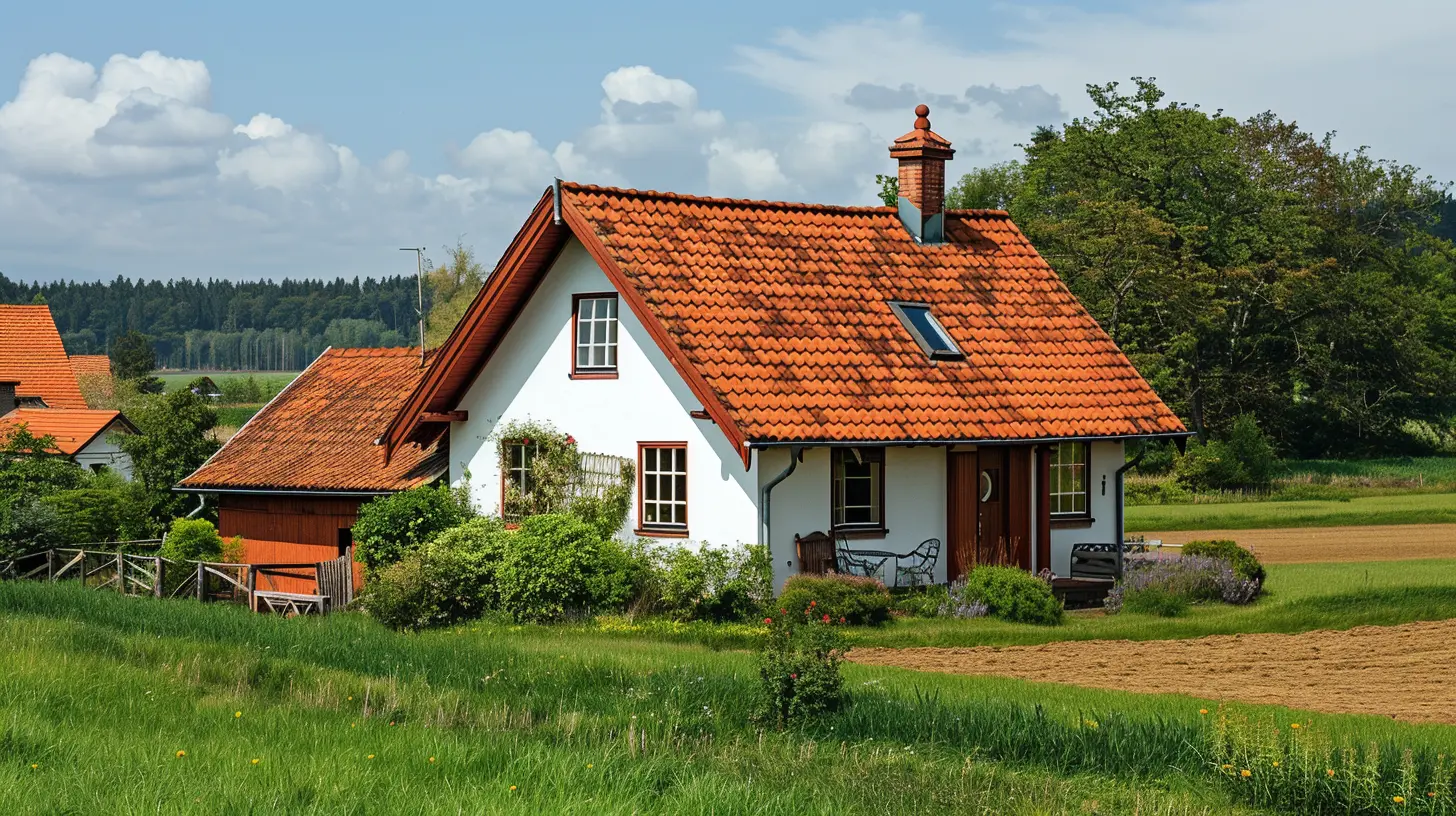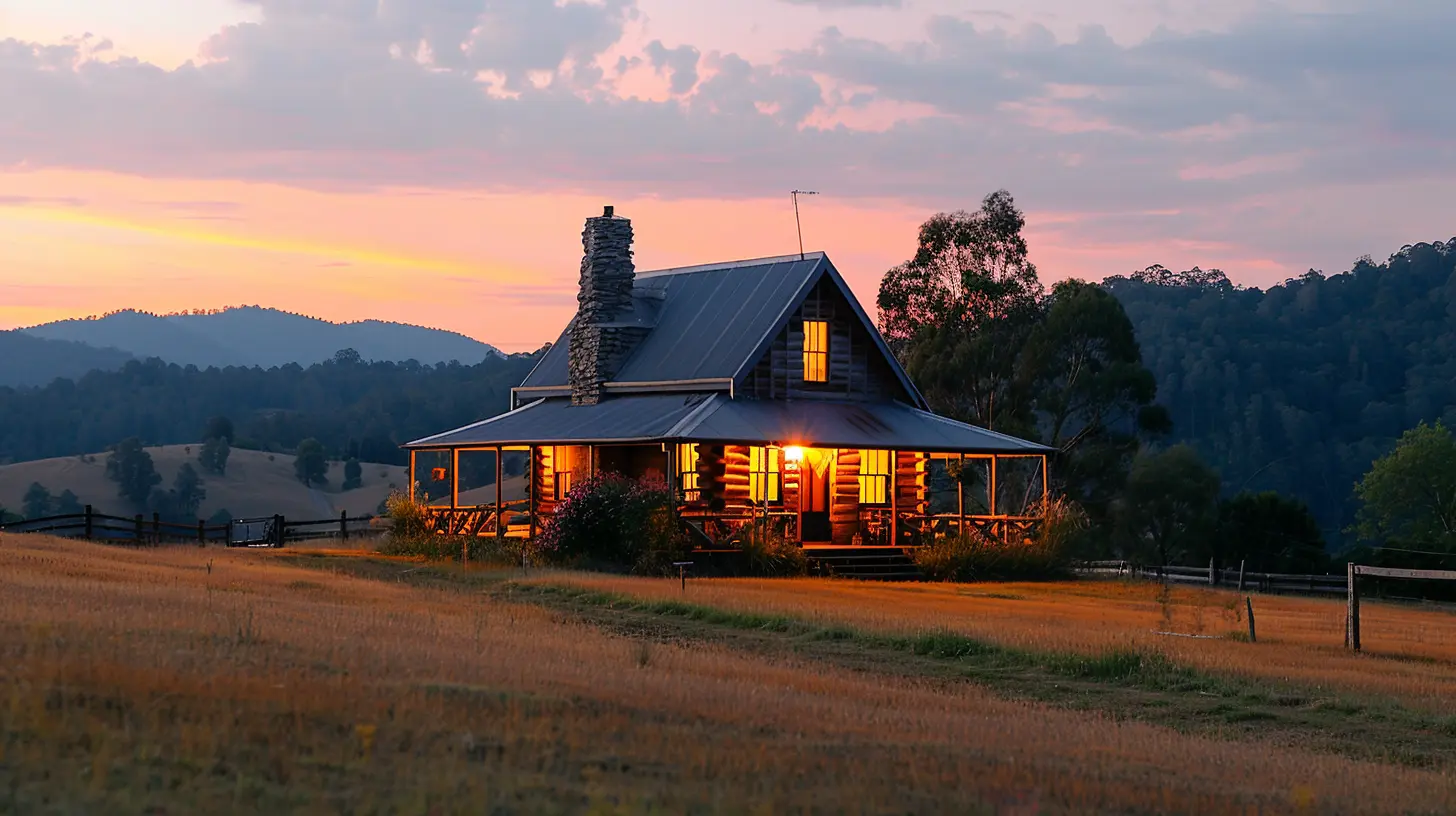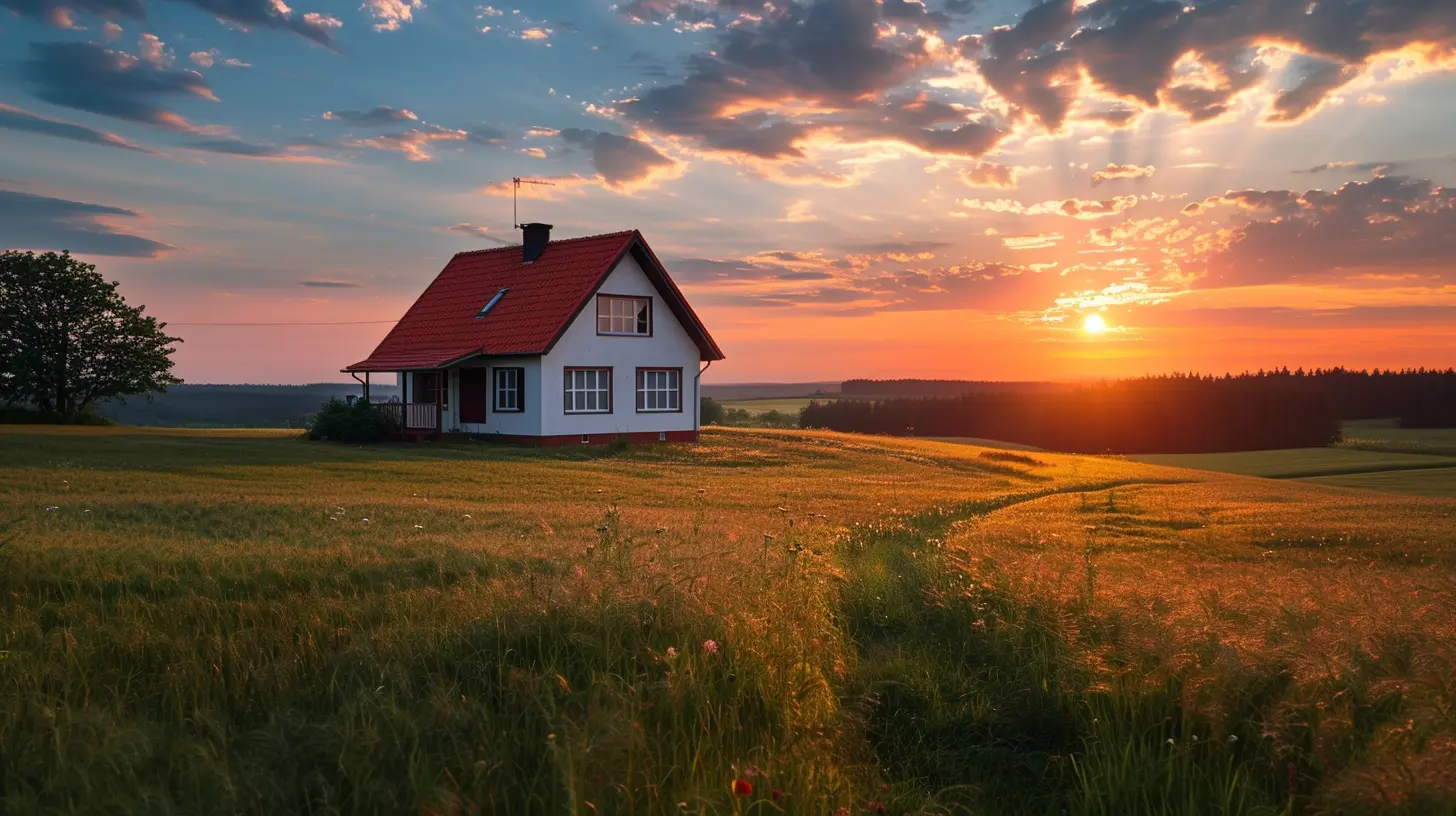Rural Property Rental Opportunities: A Growing Trend
13 August 2025
Let’s face it — the hustle and bustle of city life isn’t for everyone. More and more folks are trading in their noisy neighbors and towering skylines for wide-open spaces and the sweet sound of crickets at night. Yep, rural property rental opportunities are on the rise, and if you’re not paying attention, you might just miss out on one of real estate's most exciting trends.
Whether you’re an investor looking to diversify your portfolio or just someone curious about life beyond the city limits, there’s a lot to love — and a lot to learn — about renting out rural properties. So, grab a cup of coffee (or sweet tea, if you're channeling your inner countryside), and let’s dive into why rural rentals are booming and how you can get in on the action.
Why Rural Rentals Are Stealing the Spotlight
1. The Remote Work Revolution
Remember when working from home was a luxury? Well, now it’s pretty standard, thanks to the pandemic flipping the work world on its head. With Zoom meetings replacing boardrooms, many folks realized, “Hey, I don’t need to pay $3,000 a month to live near the office anymore.”That revelation led to a mass migration — and guess where people went? That’s right. Rural areas. Think spacious homes, privacy, cheaper rent, and better connections with nature. Sounds dreamy, right?
2. Affordable Living in a Crazy Market
City prices are, let’s be honest, out of control. It’s like playing Monopoly, but someone keeps cheating. Rural rentals offer a chance to stretch that dollar further. For the price of a tiny apartment downtown, tenants can snag a three-bedroom farmhouse with acreage. It’s a no-brainer for families, remote workers, and retirees looking to maximize value without sacrificing comfort.3. The Experiential Lifestyle Shift
People today aren’t just looking for a place to crash. They want experiences. Think farm stays, tiny homes, off-grid living. Renting a yurt in the woods or a cabin near a national park? That’s the new flex.Rural property rentals cater perfectly to this lifestyle shift. They’re not just places to live; they’re places to live a story. And for property owners, that’s a golden opportunity to cash in.
Different Types of Rural Rental Opportunities
Let’s break down the different flavors of rural rentals out there. Spoiler alert: it's not all barns and boots.1. Long-Term Residential Rentals
This is your classic, full-time tenant situation. Think families or singles moving to the country for the long haul. It’s stable, it’s steady, and if you’ve got a solid property, it can be a nice source of passive income.Ideal for: Investors seeking reliable monthly income.
2. Vacation and Short-Term Rentals
Platforms like Airbnb and Vrbo opened the door to rural escapes. Think cozy cabins, lakeside lodges, or even quirky treehouses. These are perfect for weekend getaways or digital detoxes.Ideal for: Hosts offering unique and well-maintained rural stays.
3. Agricultural Leasing
Got some land? Great! You can lease it to farmers or hobbyists looking to grow crops, raise livestock, or start that organic goat cheese business they’ve been dreaming about.Ideal for: Landowners who don’t want to farm but still want to profit from their land.
4. Glamping and Eco-Lodges
Luxury meets rustic in this popular niche. With more people wanting an “Instagrammable” nature experience without sacrificing comfort, rural areas are perfect for setting up yurts, safari tents, or eco-cabins.Ideal for: Creative entrepreneurs ready to offer an experience, not just a bed.
Benefits of Investing in Rural Rentals
Lower Entry Costs
Unlike urban properties that can cost an arm, a leg, and maybe your sanity, rural properties are generally more affordable. That means lower upfront investments and often lower property taxes. Win-win.Less Competition (For Now)
While everyone’s battling for city condos and duplexes, fewer investors are tapping into rural areas. That gives you a better shot at snagging a prime property without a bidding war.Higher ROI Potential
Here’s the kicker — rural rentals can yield just as much (if not more) in returns. If you find the right property in a desirable location (near a national park, popular trail, or lake), short-term rental income can be impressive.
Challenges You Need to Know
Alright, it’s not all sunsets and wildflowers. There are a few bumps on the rural road.Infrastructure Can Be Spotty
High-speed internet? Not always available. That can be a deal-breaker for tenants who work remotely. It’s worth checking availability before you buy.Maintenance and Management
Rural properties can come with unique maintenance headaches — think septic tanks, wells, or long gravel driveways. And if you’re not nearby, managing the property can be tricky. Hiring a local property manager can help, but that’s an extra cost to factor in.Seasonal Demand Swings
If you’re leaning into the vacation rental model, keep in mind that bookings can be seasonal. A mountain cabin might be packed in the fall but tumbleweeds in the spring.How to Make It Work: Tips for Success
1. Do Your Homework
Location matters in rural markets just as much as in the city. Look for areas with growing populations, good road access, nearby attractions, or industries like farming or tourism.2. Think About Your Target Audience
Families? Retirees? Off-grid adventurers? Knowing who you’re renting to helps you tailor your property and marketing accordingly.3. Market Smartly
List your property on multiple platforms and flaunt its unique features — sunrise views, wildlife sightings, quiet nights. Use SEO-optimized titles and descriptions (just like this one!) to get seen online.4. Embrace the Niche
Don’t try to compete with city rentals. Lean into what makes rural properties special. Create a farm-stay experience, offer sustainable amenities, or go all-in on rustic charm.Best Places for Rural Rentals in the U.S.
Looking for places to start? Here are a few hotspots catching investors’ eyes:- Appalachian Mountains (TN, NC, GA): Nature lovers' paradise with booming tourism.
- Texas Hill Country: Wine trails, scenic drives, and year-round demand.
- Upstate New York: Quaint towns, hiking trails, and getaway appeal from NYC.
- Montana & Idaho: Growing tech job markets and stunning scenery.
- Ozarks (MO and AR): Affordable land and lake access.
Real Stories: Investors Who Took the Leap
Meet Sarah from Colorado. She bought a fixer-upper cabin and turned it into a weekend rental. Just two years later, she had enough bookings to quit her 9–5 and focus solely on managing her property. Her secret sauce? Cozy decor, fast internet, and marshmallow-ready firepits.Then there’s Mike in Kentucky. He inherited 10 acres of family farmland and turned the barn into a rustic wedding venue with on-site lodging. Now it’s booked solid every summer.
These aren’t just success stories. They’re proof that with a little imagination (and a lot of elbow grease), rural rentals pay off.
Final Thoughts: Is a Rural Rental Right for You?
Rural property rentals are more than a trend — they’re a shift in how people live, work, and travel. The key is figuring out whether it aligns with your investment goals or lifestyle dreams.If you’re craving lower costs, less competition, and a chance to build something truly special, rural real estate might just be calling your name.
So, what do you say — ready to trade traffic jams for tractor trails?
all images in this post were generated using AI tools
Category:
Rural PropertiesAuthor:

Vincent Clayton
Discussion
rate this article
1 comments
Giselle Cain
Exciting possibilities! Rural rentals are thriving!
August 27, 2025 at 2:54 AM

Vincent Clayton
Thank you! It's encouraging to see interest in rural rentals growing. Exciting times ahead!


